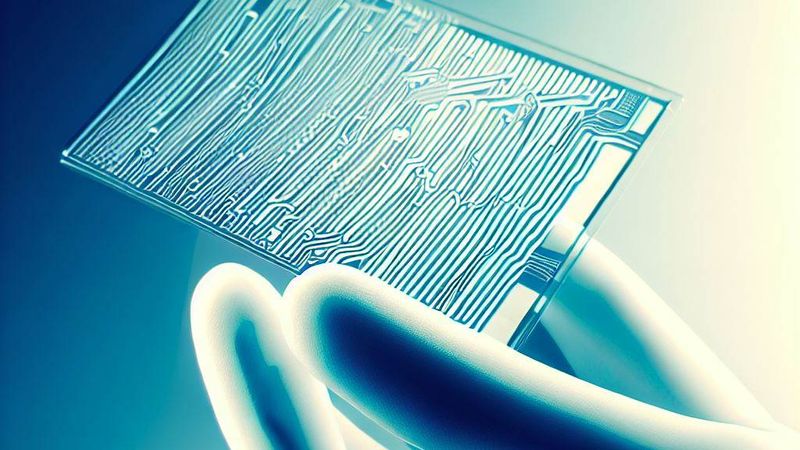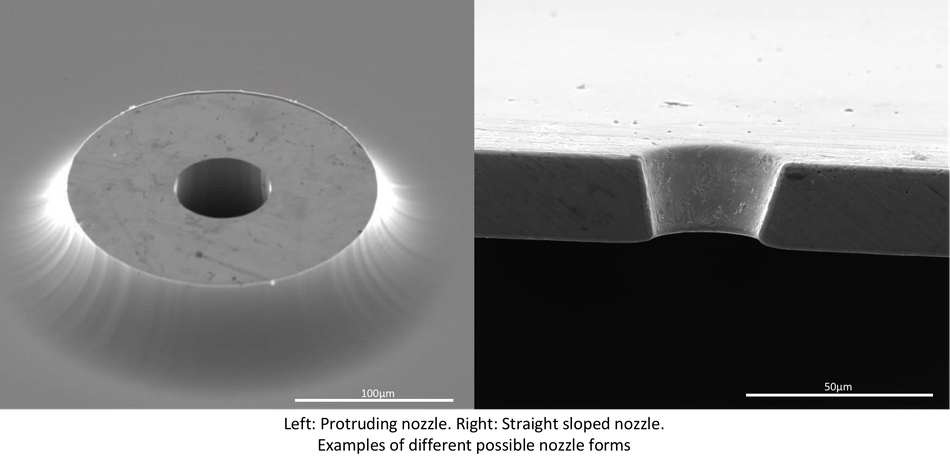From solar cells to endless applications across industries: inkjet printing revolution enabled by Electroforming technology
Progress in printhead technologies, material science, and manufacturing processes has markedly enhanced the capabilities of inkjet printers. Inkjet printing has now discovered applications in an expanding variety of industries and processes.

flexible electronics
Inkjet printing technology, first developed in the late 1950s, has revolutionized the printing industry with its capability to produce high-quality, high-resolution images at a low cost. It has found applications across a wide range of industries, including textiles, electronics, packaging, and more. In recent years, the development of new materials and contactless printing applications has introduced new possibilities for inkjet printing across various sectors.
Progress in printhead technologies, material science, and manufacturing processes has markedly enhanced the capabilities of inkjet printers. With the increasing number of printable materials, inkjet printing has discovered applications in an expanding variety of industries and processes. At present, inkjet printing technology can be employed to deposit a diverse array of functional materials onto assorted surfaces, further expanding the applicability of inkjet printing in multiple industries.
Inkjet printing for solar cell manufacturing
Inkjet printing has emerged as a promising alternative to screen printing for the application of silver paste. The silver paste can be deposited directly onto the surface of the solar cell through very minuscule openings of a highly efficient, parallel print head, providing a contactless, maskless printing alternative to conventional processes. This printing process provides the PV industry with multifaceted benefits over conventional screen printing, such as increased efficiency and electricity output, reduced metal paste consumption, and significant throughput potential. (Learn more about how our technology empowers Inkjet Printing technology to revolutionize the PV industry here: https://insights.vecoprecision.com/how-Electroforming-is-empowering-the-photovoltaics-industry-moving-forward)

Inkjet Printing Across Industries: Flexible Electronics, Biomedical Applications, Electronic Displays, and More
In addition to the use of silver paste in the manufacturing of solar cells, inkjet printing has also been used to deposit other types of functional materials onto various surfaces. For example, conductive inks can be used to print circuitry onto flexible substrates, such as plastic and fabric, to create flexible electronics. Inkjet printing has also been used to deposit materials for use in the biomedical field, such as living cells onto scaffolds to create tissue-engineered constructs for use in regenerative medicine.
Another area where inkjet printing has been used is in the production of electronic displays, including the conductive layers, the active matrix, and the organic light-emitting diodes (OLEDs).
The Technology Empowering Contactless Printing Breakthroughs Across Industries
A vital part of the dispensing print head is the high-precision nozzle plate, produced using Electroforming, a micro-precision, metal additive manufacturing (AM) process combining lithography and electrodeposition. The nozzle plate is a thin metal part with miniature holes, through which advanced materials can be directly deposited via the nozzles onto versatile surfaces for endless applications across industries.
It is the complicated combination of accuracy, precision, material properties, and unique geometries enabled by Electroforming that makes the plate an essential part of the dispensing print head. The miniature holes need to be down to several microns and perfectly circular. Traditional cutting and drilling processes might not meet the stringent accuracy and precision requirements, and etching and laser processes could result in thermal stress and microburrs. Electroforming, on the other hand, does not influence metal properties such as hardness, grain structure, or ductility. It allows for the realization of high-precision products that are thermal stress- and microburr-free, providing absolute accuracy and high aspect ratios.
Another significant advantage of Electroforming is reproducibility. The process affords a precision of approximately 5 μm. In a plate that has hundreds of miniature nozzles in a straight line, each of those nozzles needs to be the correct size, not only on each plate but on every plate and across different batches of the plate. Electroforming guarantees reproducibility, meaning the same drawing and process setup translates to perfectly uniform and reproducible printing results and the exact same product time and time again.
Electroforming can also be used to produce special hole geometries; for example, bell mouth-shaped holes are not achievable using traditional cutting and drilling processes. These holes can effectively reduce blinding/clogging of the plate/nozzles, thus ensuring exceptional paste release performance.

A Bright Future for Inkjet Printing Technology Enabled by Electroforming
As advancements in printhead technologies, material science, and manufacturing processes continue to progress, the potential applications for inkjet printing across various industries will only grow. With its ability to deposit a diverse array of functional materials onto assorted surfaces, inkjet printing has established itself as a groundbreaking technology that can revolutionize not only the printing industry but also endless sectors.
The future of inkjet printing technology is promising, and its continued development is likely to further expand its applications and drive innovations across numerous industries. By embracing and leveraging the power of advanced inkjet printing technology and advanced lithographic Electroforming technology, engineers and researchers alike can unlock new possibilities and create cutting-edge solutions to tackle the challenges of tomorrow.
Inkjet printing has come a long way since its inception in the 1950s. The development of new materials and contactless printing applications has opened up new possibilities for inkjet printing in various industries. Inkjet printing can now be used to deposit a wide range of functional materials onto various surfaces, including conductive inks for flexible electronics, living cells for tissue engineering, and silver paste for solar cells. As inkjet printing technology continues to evolve, we will likely see even more innovative applications of this technology in the future.
To learn more about Electroforming and how it can empower your next innovation, download our whitepaper Electroforming here:
